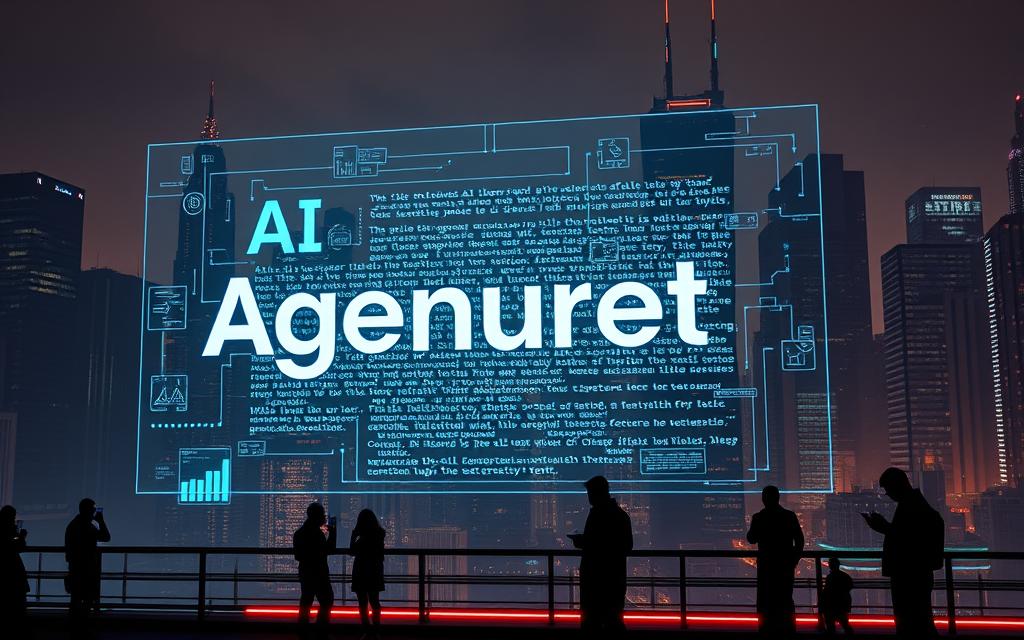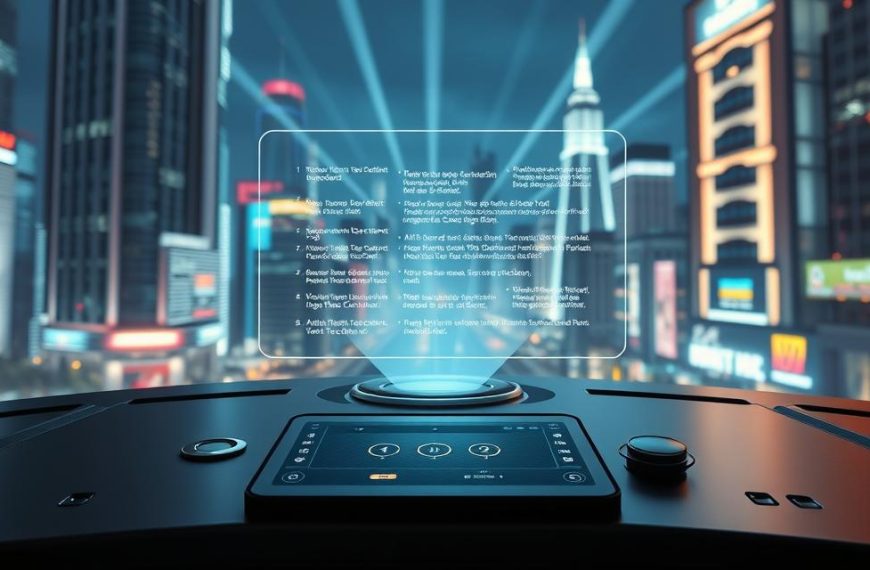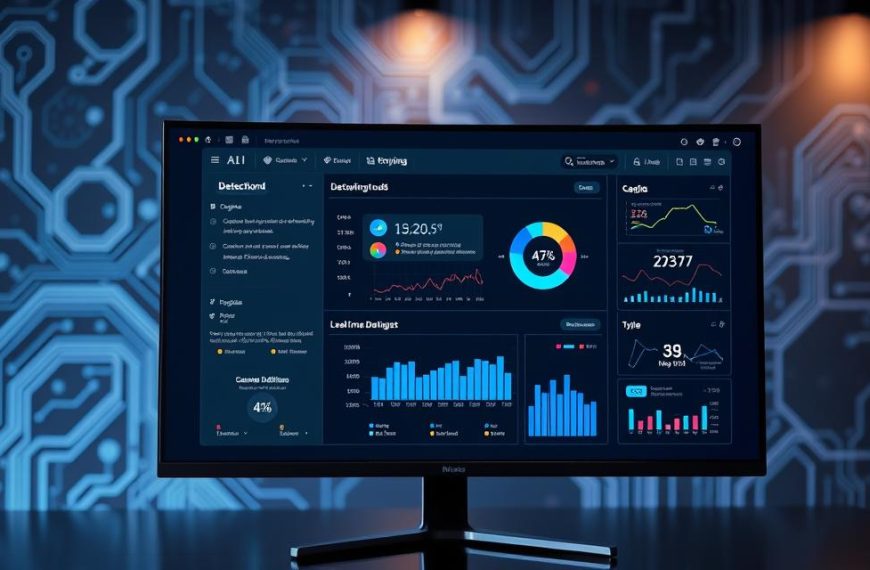The proliferation of AI writing tools has created a pressing need for reliable methods to distinguish between human and machine-generated content. As AI-generated text becomes increasingly sophisticated, the challenge of verifying its authenticity grows.
Grammarly’s AI detector tool is one such solution, utilising a machine-learning model trained on hundreds of thousands of human and AI-generated texts to assess the likelihood of a piece of content being machine-generated. This comprehensive guide will explore the latest detection tools and methodologies for verifying AI-generated text across various platforms and use cases.
Understanding AI content verification is becoming increasingly important for educators, publishers, and businesses concerned with authenticity. This guide will cover both free and premium solutions for AI detection, providing practical advice on implementing these tools in your workflow.
Understanding the Rise of AI-Generated Content
The proliferation of AI-generated content has transformed the digital landscape, raising questions about authenticity and originality. As AI models become increasingly sophisticated, the line between human and machine-generated text continues to blur.
Why AI Content Detection Matters Today
AI content detection is crucial in today’s digital environment. With advanced AI models capable of producing text that mimics human writing patterns, the need for effective detection tools has never been more pressing.
- Advanced AI models are producing text with natural variations in style, tone, and structure.
- Detection tools must evolve to keep pace with rapidly improving AI language models.
- Non-native English writers may be disproportionately flagged by detection tools due to algorithmic biases.
The Challenges of Identifying AI-Written Text
Identifying AI-written text poses significant challenges, particularly with the increasing sophistication of AI models. The complexity of language and writing styles further complicates the detection process.
- The line between human-edited AI content and AI-assisted human writing creates a grey area.
- Different writing genres and technical domains present unique challenges for detection algorithms.
- AI models trained on diverse datasets can produce text reflecting various cultural and linguistic patterns.
How AI Content Detection Works
Understanding how AI content detection works is essential for maintaining the integrity of online information. AI content detection involves a multi-faceted approach to identify AI-generated content.
Pattern Recognition in AI Detection
AI detection relies heavily on pattern recognition to differentiate between human-written and AI-generated content. By analysing linguistic patterns and stylistic features, detection models can identify characteristic traits of AI-generated text.
DeepAnalyse™ Technology and Similar Approaches
Technologies like DeepAnalyse™ employ advanced deep learning methodologies trained on extensive datasets to detect AI-generated content. These approaches utilise diverse datasets, including internet text, educational content, and synthetic AI datasets, to improve detection accuracy. As stated by experts, “The most effective detection approaches balance precision with recall, correctly identifying AI content while avoiding false positives.”
Key Features of Effective AI Content Checkers
Advanced AI content detection tools are distinguished by several key features that enhance their accuracy and reliability. These features are crucial in identifying AI-generated content across various contexts.
Percentage Indicators and Highlighting
Effective AI content checkers provide percentage indicators that quantify the likelihood of a piece of content being AI-generated. This is often accompanied by highlighting specific sections of the text that are suspected to be generated by AI models.
- Percentage indicators offer a clear measure of the detection confidence.
- Highlighting suspected AI-generated content helps users focus on potentially problematic areas.
Multi-Language Support and Accuracy Rates
Leading AI detection tools now support dozens of languages beyond English, addressing the global nature of content creation. The accuracy rates of these tools vary across languages, with higher precision achieved in widely-spoken languages with abundant training data.
| Language | Accuracy Rate | Detection Model |
|---|---|---|
| English | 95% | Advanced |
| Spanish | 92% | Premium |
| French | 90% | Standard |
The best multi-language detectors maintain consistent accuracy rates across different languages through specialised training. Reported accuracy rates typically range from 80-95%, though these figures should be interpreted cautiously as they depend on testing conditions.
Top Tools to Check AI-Generated Text
The proliferation of AI-generated content necessitates effective verification tools. Several platforms have emerged to address this need, offering advanced detection capabilities.
ZeroGPT: Advanced AI Content Detection
ZeroGPT is a leading tool in AI content detection, utilising sophisticated algorithms to identify AI-generated text. Its accuracy is notable in detecting content from various AI models.
GPTZero: Multi-Model Detection Capabilities
GPTZero stands out for its ability to detect AI-generated content across multiple models, providing a versatile solution for users. Its multi-model detection is particularly useful in diverse content creation environments.
Grammarly’s AI Detector: Integration with Writing Tools
Grammarly’s AI detector is integrated with its writing assistant, offering a comprehensive solution that combines content creation with verification. It detects AI-generated text and provides suggestions for improvement, ensuring that the content is both original and polished.
These tools represent the forefront of AI detection technology, each offering unique features that cater to different user needs. Whether you’re a content creator, editor, or educator, these platforms can help ensure the authenticity of your content.
Accuracy and Reliability of AI Detection Tools
The accuracy of AI detection tools is a critical factor in their effectiveness. As highlighted in a study on AI-generated content detection, the reliability of these tools can vary significantly based on the algorithms used and the specific characteristics of the text being analyzed AI-generated content detection.
Understanding False Positives and Negatives
False positives and negatives are significant concerns when using AI detection tools. A false positive occurs when a human-written text is incorrectly identified as AI-generated, while a false negative happens when AI-generated content is mistakenly classified as human-written. Understanding these errors is crucial for improving the accuracy of detection models.
Factors Affecting Detection Accuracy
Several factors influence the accuracy of AI detection tools, including:
- Text length, with longer samples typically yielding more reliable results
- The specific AI model used to generate content, affecting detectability
- Human editing of AI-generated text, which can reduce detectability
- Subject matter expertise in the text, influencing detection patterns
- The training data used by detection tools, determining which AI models and writing styles they can identify
As stated by experts, “the continuous evolution of AI language models creates a moving target for detection tools, requiring regular updates to maintain accuracy.”
How to Check AI Content Effectively
To effectively check AI-generated content, it’s crucial to understand the capabilities and limitations of AI detection tools. This understanding forms the basis of a thorough verification process.
Step-by-Step Process for Verification
To verify AI-generated content, follow a systematic approach. This involves using AI detection tools like Grammarly’s AI Detector to analyse the text.
- Understand that detection results represent probability rather than certainty.
- Consider the confidence level provided alongside detection scores.
- Examine highlighted sections that triggered detection for patterns.
Interpreting Detection Results
When interpreting detection results, consider the context, writing style, and purpose of the content. Be cautious with borderline results (typically 40-60%) and use detection results as part of a holistic evaluation.
- Contextualise results based on the writing style and subject matter.
- Be cautious when interpreting borderline results.
- Use detection results as one component of a comprehensive evaluation process.
Common Limitations of AI Detection Technology
Several factors limit the accuracy and reliability of AI detection technology. AI detectors can be biased, often misinterpreting writing styles and flagging content as less authentic, particularly for writers whose primary language is not English.
This bias occurs because AI typically learns from majority-language patterns, which may not fully account for the diverse ways people writing and express themselves through text. As a result, detection tools face significant challenges in accurately identifying AI-generated content.
Evolving AI Models and Detection Challenges
Evolving AI models pose a significant challenge for detection technology. As AI-generated content becomes more sophisticated, detection tools must continually adapt to recognise new patterns and characteristics.
Language and Style Variations
Language and style variations also present substantial challenges. Detection tools often struggle with non-standard writing styles, regional dialects, and less commonly spoken languages, leading to potential false positives and negatives.
- Detection tools struggle with non-standard writing styles that deviate from trained patterns.
- Non-native English writers experience higher false positive rates due to algorithmic biases.
- Creative writing and highly technical content present unique challenges due to specialised language patterns.
Use Cases for AI Content Detection
AI content detection is crucial for ensuring the originality and authenticity of content in various sectors. As AI-generated content becomes more prevalent, the need for effective detection tools grows across different industries.
Academic Integrity and Plagiarism Prevention
In academic settings, AI detection tools help maintain integrity by identifying AI-generated content. This is particularly important for preventing plagiarism and ensuring that students’ work is original. AI detectors and plagiarism checkers serve different purposes but work together to evaluate content originality.
Content Authenticity for Publishers
Publishers and media organisations implement AI detection to maintain editorial standards and content authenticity. Detection tools help ensure transparency about content creation methods, maintaining reader trust. Many publishers are developing guidelines for acceptable AI usage in different content categories.
| Industry | Use of AI Detection | Benefits |
|---|---|---|
| Academia | Preventing plagiarism and maintaining academic integrity | Ensures originality of students’ work |
| Publishing | Maintaining content authenticity and transparency | Enhances reader trust and maintains editorial standards |
| Content Marketplaces | Enforcing policies on AI-generated content | Ensures compliance with content creation guidelines |
As shown in the table, AI content detection has various applications across industries, enhancing content authenticity and originality. By adopting these tools, organisations can ensure transparency and maintain high standards in content creation.
Beyond Detection: Ensuring Content Originality
Ensuring content originality goes beyond mere detection of AI-generated text. It involves a combination of leveraging AI assistance while maintaining original writing and properly citing AI-generated content when used.
Balancing AI Assistance with Original Writing
To maintain originality, it’s crucial to strike a balance between using AI tools for assistance and producing original writing. While AI can aid in research and organisation, the core content should reflect the author’s unique perspective and voice.
Best Practices for Citing AI-Generated Content
Citing AI-generated content is becoming increasingly important. Best practices include specifying the AI tool used, the date of usage, and the extent of its contribution to the work. Tools like Grammarly can generate citations for AI usage, streamlining the disclosure process.
- Citation practices for AI assistance are evolving, with increasing expectations for transparency about AI usage in content creation.
- Academic and professional organisations are developing standardised formats for citing AI tools.
- Transparent disclosure helps readers evaluate content based on its creation process and sources.
| Context | Level of Disclosure | Citation Format |
|---|---|---|
| Academic Writing | Detailed | Specify AI tool, date, and extent of contribution |
| Casual Content | Basic | Mention AI tool used |
The Ethics of Using AI Content Checkers
With the rise of AI-generated content, it’s crucial to address the ethical considerations associated with AI detection tools. The use of AI content checkers has become increasingly important in maintaining content authenticity, but it also raises several ethical concerns that need to be addressed.
Privacy Considerations When Checking Content
One of the primary ethical concerns is the issue of privacy. When using AI detection tools, there’s a potential risk of compromising the privacy of content creators. It’s essential to ensure that detection tools are designed with privacy in mind, and that they comply with relevant data protection regulations.
Responsible Use of Detection Technology
The responsible use of AI detection technology is critical. This involves understanding the limitations of detection tools, avoiding over-reliance on automated results, and implementing detection tools as part of a broader evaluation process. As noted by experts, “No AI detector is 100% accurate,” which underscores the need for a holistic approach to evaluating content originality.
Some key considerations for responsible use include:
- Establishing clear policies regarding how detection results will be used and what thresholds constitute acceptable content.
- Considering the potential impacts of false positives on content creators.
- Fostering transparency about detection usage to set appropriate expectations and build trust.
- Promoting educational approaches that focus on proper AI usage rather than punitive detection.
By adopting these practices, organisations can ensure that AI detection technology is used in a way that is both effective and ethical.
Future Developments in AI Detection Technology
The future of AI detection technology is poised to undergo significant transformations. As AI-generated content becomes more sophisticated, detection methods must also evolve to keep pace.
Emerging Models and Improved Accuracy
New AI models are being developed with enhanced capabilities, which in turn drive the need for more accurate detection methods. Improved accuracy in AI detection will be crucial in maintaining the integrity of content.
The Arms Race Between Generation and Detection
The relationship between AI generation and detection technology is akin to an arms race. Advances in AI generation drive innovation in detection, and vice versa. Key aspects of this competition include:
- AI models designed to evade detection by mimicking human writing styles.
- Detection technologies responding with more sophisticated analysis methods.
- The ongoing cycle of improvement benefiting both AI writing and detection.
This dynamic interplay will continue to shape the future of AI detection, with significant implications for content creators and consumers alike.
Integrating AI Detection into Content Workflows
Integrating AI detection into content workflows is crucial for maintaining authenticity and consistency in today’s digital landscape. This integration enables organisations to verify the origin of their content effectively.
For Content Creators and Editors
Content creators and editors can benefit from AI detection tools by ensuring the authenticity of their work. Grammarly’s AI content detection feature, available for Grammarly Premium, Grammarly Business, and Grammarly for Education subscribers, is an example of such a tool.
For Educational Institutions and Businesses
Educational institutions and businesses are also leveraging AI detection to streamline their workflows. The following table highlights some key integration strategies:
| Sector | Integration Strategies |
|---|---|
| Educational Institutions | Implementing detection tools within learning management systems, developing clear policies regarding AI usage and detection. |
| Businesses | Integrating detection into content approval workflows, establishing guidelines for acceptable AI assistance in different content categories. |
Both sectors benefit from detection tools that offer batch processing capabilities, enabling efficient verification of multiple documents. As a result, organisations can maintain high standards of content authenticity and consistency.
Advanced Features of Premium AI Detection Services
Premium AI detection services offer a range of advanced features that enhance the accuracy and reliability of AI-generated content detection.
These premium services are designed to provide users with comprehensive tools for verifying the authenticity of content.
API Access and Batch Processing
Premium AI detection services often include API access, enabling seamless integration with existing workflows and batch processing capabilities for handling large volumes of content.
Report Generation and Documentation
Advanced reporting features provide detailed documentation of detection results, including PDF report generation for shareable verification documentation. Key features include:
- Comprehensive reporting for accountability and record-keeping
- PDF reports for stakeholders, clients, or academic submissions
- Section-by-section analysis of detected content
- Visual highlighting of potentially AI-generated sections
- Historical tracking for monitoring detection trends
- Customisable report templates for branding and contextual information
These features collectively enhance the detection process, providing users with reliable results and detailed data for informed decision-making.
Conclusion: The Future of AI Content Verification
The future of content verification lies in balancing technological detection with human judgment. While AI detectors can assess whether text appears to be AI-generated, their accuracy varies based on algorithms and content characteristics. A holistic approach to evaluating writing originality is essential. This involves combining AI detection tools with human insight to ensure content authenticity. As AI writing becomes more sophisticated, verification will focus on transparency and proper attribution. Effective AI content verification will continue to evolve, incorporating adaptable strategies and clear ethical guidelines to check AI-generated text effectively.





















